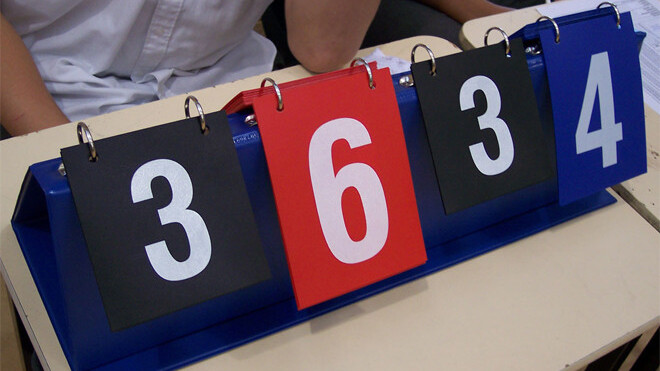
I just graduated from college a couple of weeks ago. Since I have been freelancing for over five years, earlier this year I made the decision to continue my freelancing after college and relaunched my freelance business under a new name. Between a full-time school schedule and word-of-mouth freelance clients, I never really had to advertise or promote myself much because I really had hardly any time to take on work without losing sleep.
Now, I am a full-time freelancer with all of this free time that school no longer eats up. I needed to start promoting myself and finding prospects for my graphic and web design services. I’m sure I am not the only freelancer who has had to ramp up their self-promotion for one reason or another (loss of a full-time job, starting to freelance full-time, etc.).
There are tons of books, articles and the like that tell you how you can get new freelance clients. Most of them suggest finding specific prospects and marketing your services to them. Some of the sources also go as far as saying you need to “qualify” or target “high probability” prospects.
We could have a great discussion on what types of marketing you could do (one-on-one, direct mail, cold call, cold email, etc), but that isn’t what we are going to talk about today. However, there aren’t many resources out there to help you “qualify” prospects or determine what your “high probability” prospects are for your services.
For freelancers who feel they need to start marketing themselves to gain more business, starting the process of finding prospects can be a daunting task, let alone figuring out which are the best prospects to target.
I am going to show you how you can start building a prospect list and how you can qualify or determine high probability prospects (or for short find the best prospects) to focus your energy on. To do this we are going to build a list of information on these prospects and rate them based on qualities you feel are most important in your future clients.
I do want to point out that setting up this system is a bit involved at first and requires some work to get it going. It is a bit time consuming, but you should be able to use this throughout your freelancing career and only have to make minor tweaks as time goes on. Once everything is in place and the system is set, then it is easy to manage and use in the future.
First things first, make some decisions.
The first decision is to determine what type of clients you would like. I suggest picking one industry to focus on (i.e. financial industry, clothing industry), ideally an industry that you have worked in and have experience in already. I also suggest narrowing down the industry as well, maybe by location such as the same city/county/state as you. Instead of location, you could narrow down by other factors such as “small business” (however you define it for yourself) or size of business (more than 10 employees, less than 5 employees).
The reason for narrowing down your prospecting in this way is so that it does not overwhelm you and you end up doing what is called the “shotgun” approach, targeting anyone and everyone just because they exist. The more you narrow down now, the better your outcome will be later.
The next decision is to figure out what information about each prospect you should collect. This will vary depending on your needs and the information you want, but here is a short list of the type of information I collect about prospects:
- Business Name
- Address
- Phone Number
- Website
- Email Address
- Name of Person in the role who is likely to hire freelancers (i.e. Marketing Director, Creative Director, etc.) if available.
- Where did you hear about them/get their information from? (phone book, online directory, ad in the paper).
Determine a handful of “criteria” to gather information about.
While these pieces of information are a good start, you should collect more info that is relevant to things you can connect on or feel are highly relevant to the services you provide.
For me? One of the pieces of information I collected was their BBB rating or status. Since I am a BBB accredited business, this is something that connects me to prospects who may also be accredited. I also can tell by their rating if they are a solid business to work with (did they have a lot of consumer complaints?).
Determine four to five pieces of “criteria” or qualities that you feel you can either connect on, determine a prospect’s current success, or in some way you feel is an indication that the prospect is more likely to hire you. You can look at your past clients to help you with this as well. Is there some connection between you and your current or past clients? For example, do most of your clients come to you because you are into fitness? Do most of your clients work close to you?
Throughout this article, I am going to use a freelance web designer as an example. If a web designer is looking for new clients, they may feel that those businesses who don’t have a website, who invest in advertising, who show signs of growth and success (have they been in the news or are currently hiring?), conduct business close to them, and are a member of the same Chamber of Commerce they are in are all important and relevant .
These are things that the web designer can connect with (local business owner, member of the Chamber of Commerce, spend money on promotion), signs that the business is doing well (shows signs of growth and have been in the news for good reasons), and could be in need of a service the web designer can offer (they have no website).
In addition, you can also collect information that is relevant to the criteria you determined above. Simple “yes” or “no” on many of those mentioned above works. Keep it short and sweet and something that is easy to determine. For example, do they spend money on advertising? Your choices can be “a lot, a little, none.” Do this for all of your criteria. Ideally, you should be able to answer each criteria within a second or two for each prospect. It shouldn’t be too subjective or variable from prospect to prospect; the “answers” to the criteria should be very precise.
Start building your database.
I recommend setting up a spreadsheet with columns that has each piece of information in its own column. A spreadsheet will not only be easy to organize but it will help you later when there is math involved. Each prospect gets their own row, and I go through and fill out the information based on the column headings.
Once you have a spreadsheet set up with information and criteria all in columns the way you want, then get to work filling in the spreadsheet. However you find prospects in the industry you target is completely up to you. You can use the phone book, online directories such as Chamber of Commerce directories, take note of businesses in the industry who you saw an advertisement for, or any way that works for you.
In your search for prospects, don’t throw out any prospects just because they don’t meet some of your criteria or it’s hard to get information. We will talk about sorting out the not-so-good prospects later. Focus on going through and finding any businesses that are in your target industry (and who are local to you if that is something else you determined earlier). Every single prospect you find who is in the right ballpark regardless of how well they appear to fit the criteria should be in your database.
While you are building the database, pick a number you feel is a good place to stop at to continue on (50 is a good number). You don’t necessarily have to stop there, but it is a nice goal to aim for before you determine the high-probability prospects (discussed next).
Applying a rating system.
This is where all of your hard work will start to pay off. We determined five pieces of criteria for the web designer above (have a website or not, invest in advertising, growth/success signs, operate closeby, member of local Chamber) and now it’s time to give each one a point system.
Before assigning numbers, what works best for you to determine if something is good or not? For most of us, adding numbers together to get a high number, where the highest number often equates the best number is best (think grades in school). It is better to get a 91 on a test than a 57. This is the concept on which we will build the rating system.
Let’s take the first criteria and give it a point system. A prospect could either have a good website, have a bad website, or have no website at all. For a web designer, they may feel it is best to target those with no websites first, those with bad websites next, and then those with good websites last. Thus, we come up with the following scale:
- 5 points = prospect has no website
- 3 points = prospect has bad website
- 1 point = prospect has good website
A prospect with no website gets 5 points, a prospect with (what the web designer feels is) a bad website gets 3 points, and a prospect with a good website gets 1 point. Add a column in your spreadsheet right next to the criteria and enter in your points.
You repeat this process for the other remaining criteria. Is the prospect a Chamber member? A “yes” could earn 5 points while a “no” could earn 1 point (if the freelancer feels that being a Chamber member is more ideal in gaining the prospect’s business than not being a Chamber member).
The way you design your system is up to you.
The number scale you assign and the “answers” to the criteria you determine are all up to you. Make sure you pick something easy to remember, easy to determine, and easy to rate. The idea is to make sure this can all be done within a couple of minutes for each prospect. If you find yourself spending more than 5 minutes on each project determining what answers to the criteria you should pick, then it is no longer working in your favor and you should work to simplify the system.
Assign each prospect a total score.
I’m sure you saw this coming, but once you have assigned each of your criteria a number for a prospect, create a new column, add up all the points you gave that prospect in all of the criteria and enter it in this column. If you have some knowledge of spreadsheets, you can set this up to automatically add all the columns similarly with a few clicks of the mouse.
After every prospect has a final score, you should be able to see which ones have the highest ones. If you have spreadsheet skills, you should then be able to sort prospects based on their score. Congratulations! You just found the ones that you are the highest probability prospects based on criteria you feel are important.
I recommend taking the top half of the highest-scoring prospects and start marketing your services to them (be it direct mail, cold call, etc). This should be easy since you already have their addresses and phone numbers in your spreadsheet.
But, does it get me more clients?
The answer to that depends on how well your criteria can predict which prospects will actually hire you. It is important to keep track among those you’ve contacted of which ones actually hired you (you can do this in a new column). Then you can analyze what the prospects who showed interest have in common, and you can adjust your system as needed.
As with any type of marketing, it is an experiment. At least this experiment gives you structure and a way to focus energies now and in the future. You have to try many different things until you find something that starts working for you. For instance, the web designer may find that those who have bad websites are contacting him more than those with no websites. It may be worth him editing his system to give higher points to that than to those that have no website.
Is this something you will try? Let us know your thoughts in the comments!
Get the TNW newsletter
Get the most important tech news in your inbox each week.




